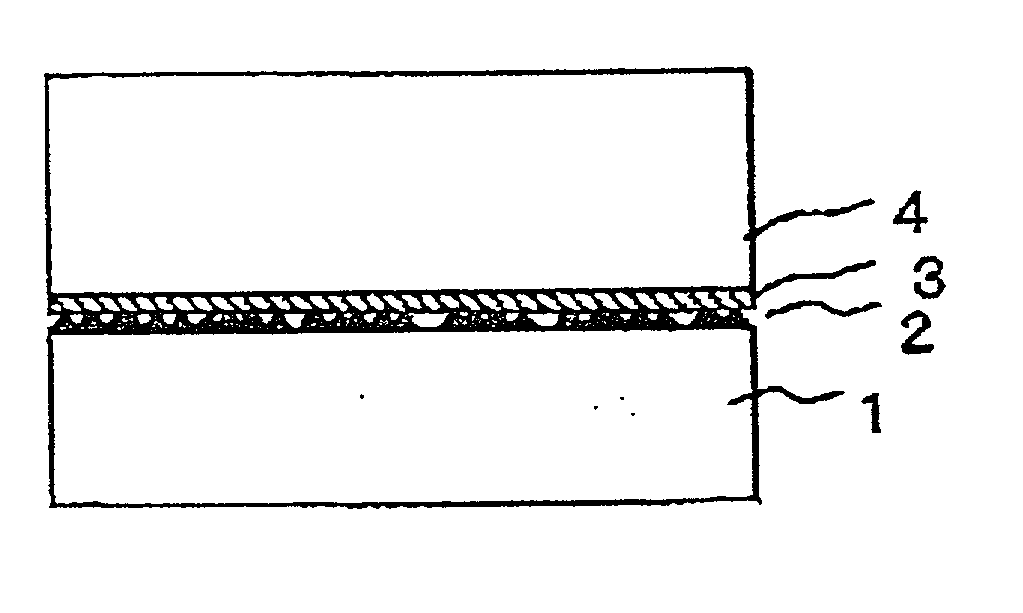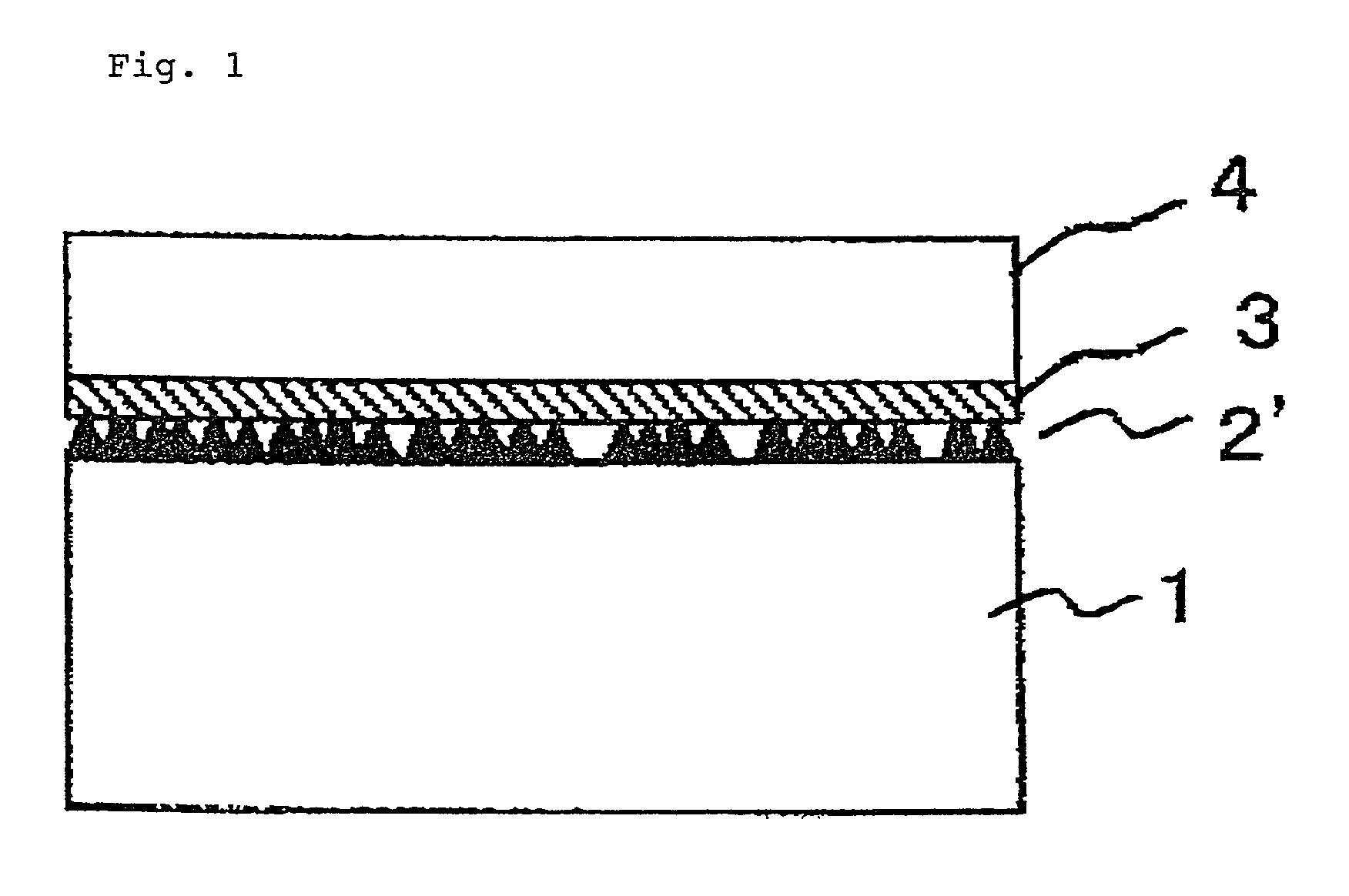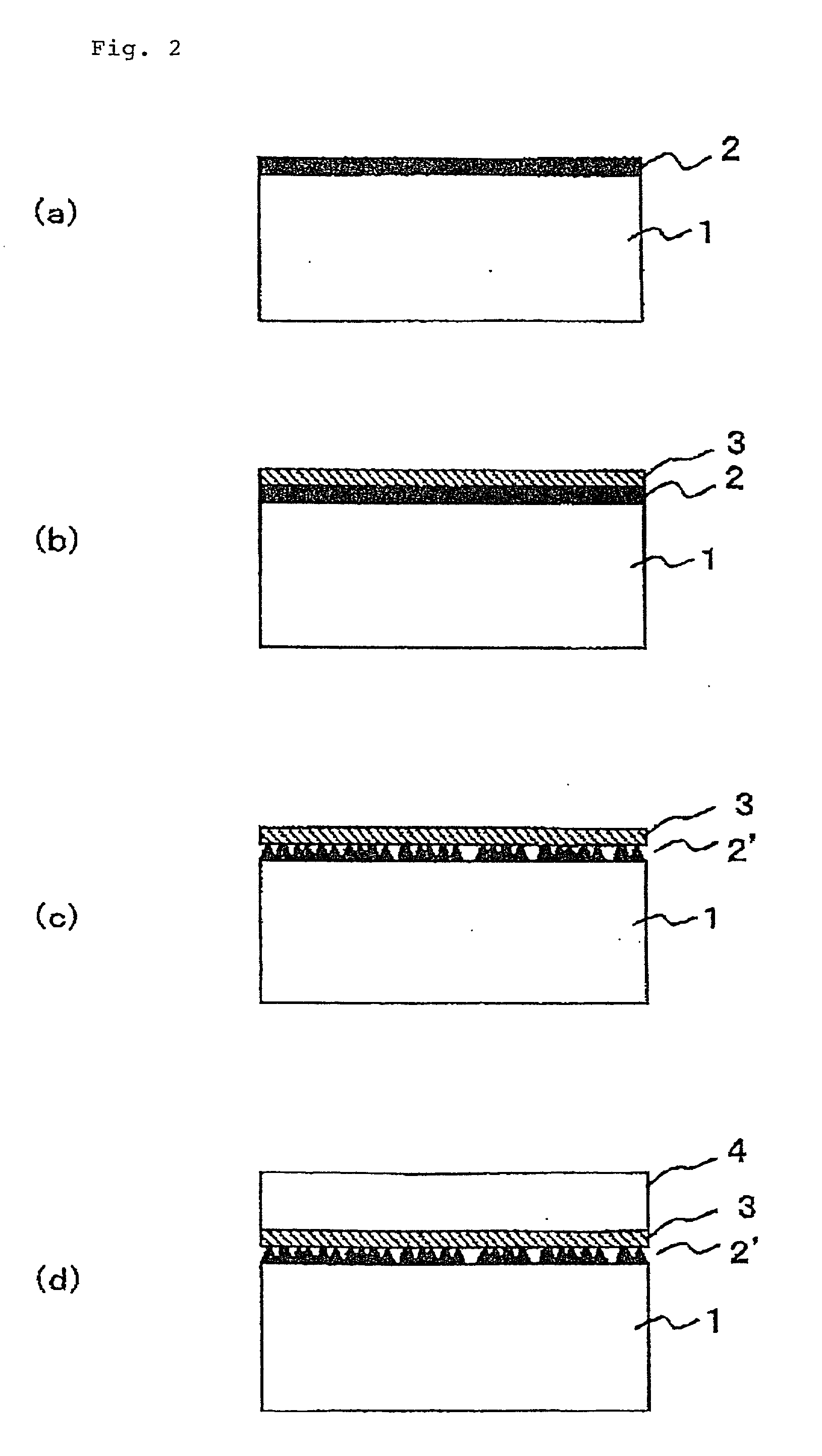Semiconductor substrate made of group III nitride, and process for manufacture thereof
- Summary
- Abstract
- Description
- Claims
- Application Information
AI Technical Summary
Benefits of technology
Problems solved by technology
Method used
Image
Examples
example 1
[0097] The structure of a semiconductor substrate obtained by the present invention is shown in FIG. 1, and sectional views of the process for manufacturing are shown in FIG. 2. The substrate was prepared by forming an undoped GaN layer 2 to a thickness of 400 nm on the C face ((0001) face) of a single-crystalline sapphire substrate 1 having a diameter of 2 inches, by means of MOCVD method with TMG (trimethyl gallium) and NH.sub.3 as starting materials (FIG. 2(a)). A titanium film 3 was vapor-deposited on the epitaxial GaN substrate to a thickness of 20 nm (FIG. 2(b)), and then loaded into the MOCVD chamber and the heat-treatment was carried out at 1050.degree. C. for 20 minutes in the stream of Ar to which 20% H.sub.2 was mixed (FIG. 2(c)). Then, in the same chamber, 2 .mu.m of a GaN layer 4 was grown using TMG and ammonia as starting materials on the titanium film 3 at 1050.degree. C. (FIG. 2(d)). Thereby, a semiconductor substrate of a sectional structure as shown in FIG. 1 was o...
example 2
[0102] In order to confirm that the voids in the GaN layer 2' was formed during the heat treatment of the substrate in Example 1, a substrate whereon titanium was vapor-deposited was heat-treated in the same method as in Example 1, and it was loaded out without growing the GaN layer thereon. Thereafter, the cross section was observed through an SEM. The result of SEM observation for the cross section of the substrate is shown in FIG. 7. It was confirmed from this result that voids same as those observed in Example 1 were formed in the GaN layer 2' on the sapphire substrate.
example 3
[0103] The sectional views of the process of this example are shown in FIG. 2. The substrate was prepared by forming an undoped GaN layer 2 to a thickness of 200 nm on the C face of a single-crystalline sapphire substrate 1 having a diameter of 2 inches, by means of MOCVD method with TMG and NH.sub.3 as starting materials (FIG. 2(a)). A titanium film 3 was vapor-deposited on the epitaxial GaN substrate to a thickness of 25 nm (FIG. 2(b)), and then loaded into the MOCVD chamber and the heat-treatment was carried out at 1050.degree. C. for 10 minutes in the stream of Ar to which 20% H.sub.2 was mixed (FIG. 2(c)), followed by further heat-treating it at 1050.degree. C. for 30 minutes in the stream of N.sub.2. Then, in the same chamber, 2 .mu.m of a GaN layer 4 was grown using TMG and ammonia as starting materials on the titanium film 3 at 1050.degree. C. (FIG. 2(d)).
[0104] The surface of the epitaxial GaN substrate obtained thereby was very flat, and microscopic and SEM observations co...
PUM
 Login to View More
Login to View More Abstract
Description
Claims
Application Information
 Login to View More
Login to View More - R&D
- Intellectual Property
- Life Sciences
- Materials
- Tech Scout
- Unparalleled Data Quality
- Higher Quality Content
- 60% Fewer Hallucinations
Browse by: Latest US Patents, China's latest patents, Technical Efficacy Thesaurus, Application Domain, Technology Topic, Popular Technical Reports.
© 2025 PatSnap. All rights reserved.Legal|Privacy policy|Modern Slavery Act Transparency Statement|Sitemap|About US| Contact US: help@patsnap.com



